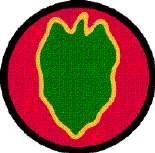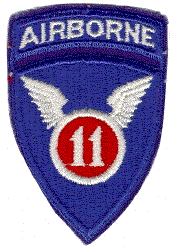In 1997, Douglas Macgregor published a bold
plan to reorganize the US Army's ten 15,000-man active duty divisions into more mobile and
flexible 5000-man "Groups". The Army's chief complaint was that
decades of division tradition and esprit would be destroyed. This
excuse for resisting change was recently echoed by
Army Chief of Staff General Eric Shinseki. However, modern divisions are much
more powerful than WW II divisions, consume far more supplies, and even
require more manpower despite labor saving devices like computers and
forklifts. This is because new technology added over the years
grew the divisions. Once Army divisions added all the support
attachments they wanted for the 1991 invasion of Iraq, divisions crossed the line
of departure with over 22,000
soldiers each.
Macgregor's book provides details into the exact organization of his "Groups", which are reinforced brigades capable of independent operations. I strongly support this concept, but the simple solution to overcome resistance to "Groups" is to call them "Divisions." A second suggestion was to use traditional and shorter designations for these divisions. Macgregor's "Heavy Combat Group" is full of armored vehicles, so call it an "Armored Division". The "Light Recon-Strike Group" should be called a "Cavalry Division", and his "Airborne/Air Assault Group" should be called an "Airborne Division" since soldiers in helicopters are airborne too.
I would add "Infantry Division" to the list; basically guys with guns. They will have no heavy tanks or artillery except mortars; so they will not be "Mech" Infantry, and not use the meaningless "Light" designation. These soldiers would not train to fight as a major maneuver unit, but guard ports, airfields, POWs, bridges, and headquarters. They will also serve as peacekeepers and provide a labor pool for engineer units. In an emergency, infantry divisions may provide replacements for maneuver divisions. In some situations, they will provide infantry units to augment maneuver divisions involved in nasty urban fighting. Overall, they will retain the "grunt" tradition of getting all the unwanted missions. They will rarely participate in large peacetime maneuvers, but focus on the basic infantry skills needed for their supporting role. Without infantry divisions, many highly trained and expensively equipped maneuver divisions will find themselves assigned to perform these basic tasks.
Macgregor ignored the Army's fundamental mission of defending the United States. This idea is unpopular with major corporations who love the millions of desperate workers flooding the nation who push labor costs down. However, the vast majority of American people want this silent invasion of America to halt, and the Army should offer to help defend America. While the Justice Department works hard to find and deport dangerous aliens, half will simply walk back into the USA though the lightly patrolled border.
The US Army once had a dozen forts along the Mexican border because guarding the border was the Army's primary peacetime mission until World War II; the US Border Patrol wasn't even formed until 1924 and only has 9000 agents today. The US Army must overcome the imperial attitude it developed during the Cold War and offer resources to defend the USA. The Army will only guard remote border areas and only detain people they observe crossing illegally until Border Patrol agents arrive. This will allow the Border Patrol to focus on running checkpoints, guarding urban areas, and processing arrestees. This is no small task considering the Border Patrol has made over 500,000 arrests since the 9-11 terror attacks.
Rather than fight Congress and Army Generals over downsizing from ten divisions, the civilian leadership should "grow" the Army to 24 divisions divided equally among four Corps. Keep in mind, these new divisions are reinforced brigades today. Their smaller size makes them more deployable and increases unit cohesion and esprit. They may be commanded by a one or two-star General. Twenty brigade headquarters will be eliminated while 14 convert into reactivated division headquarters. Modern communications allows a Corps headquarters to easily control six or more divisions, so this plan will "flatten" the Army's command structure and eliminate thousands of brigade headquarters personnel. This will allow the Army to "stand up" many famous divisions from its recent past. Since the Army had only two Cavalry divisions, today's Armored Cavalry Regiments can simply become divisions.
I Corps - Pacific Expeditionary
About half the soldiers will be withdrawn from Korea, and the money saved will fund ships to be based in Washington state to rapidly deploy the heavy divisions from Fort Lewis. The three infantry divisions may rotate for eight-month tours in Korea.
2nd Infantry Division (Korea)
5th Infantry Division (Schofield, Hawaii)
25th Infantry Division (Schofield, Hawaii)
3rd Cavalry Division (Fort Carson, Colorado)
4th Armored Division (Fort Lewis, Washington state)
5th Armored Division (Fort Lewis, Washington state)
III Corps - Atlantic Expeditionary
This Corps becomes much lighter as it shifts from a Cold war structure, yet retains heavy elements ready for rapid ship embarkation in Georgia. The infantry divisions may rotate to Germany with the 1st Infantry.
3rd Infantry Division (Fort Benning, Georgia)
4th Infantry Division (Fort Hood, Texas)
24th Infantry Division (Fort Hood, Texas)
1st Cavalry Division (Fort Hood, Texas)
1st Armored Division (Fort Stewart, Georgia)
3rd Armored Division (Fort Stewart, Georgia)
18th Corps - rapid deployment
This will
remain
the Army's worldwide rapid deployment Corps, with elements in Europe. The
2nd Armored will fly overseas to use assets embarked on ships in the Indian Ocean. Most
soldiers are pulled out of Germany while some stateside bases also shrink.
The 173rd Airborne Brigade in Italy becomes the 11th Airborne Division. It
could be based at Fort Bragg and rotate deployments to Italy with the 82nd and
101st. Keep in
mind that "Airborne" divisions are not pure paratroop units, but have airmobile
elements which are transportable by C-130s and helicopters.
11th Airborne Division (Vicenza, Italy)
82nd Airborne Division (Fort Bragg, N. Carolina)
101st Airborne Division (Fort Campbell, Kentucky)
1st Infantry Division (Germany)
2nd Cavalry Division (Fort Polk, Louisiana)
2nd Armored Division (Fort Riley, Kansas)
V Corps - border security / training support / domestic assistance
Five divisions are assigned to guard half of the long US border. They will stop no persons in the USA unless they observed them illegally crossing the US border. The 6th will help watch the coast as Alaska has become a favored route for Chinese, Russian, and Filipino smugglers. They also serve as specialized units, with the 10th focused on Mountain warfare and the 6th Arctic warfare. The 11th Cavalry is an operational training division, now called the 11th ACR. Battalions from the border Infantry divisions will sometimes deploy for a couple of weeks to serve as opposing forces to support training of the maneuver divisions, or for domestic missions like firefighting, disaster relief, and riot control.
6th Infantry Division (Fort Richardson, Alaska)
7th Infantry Division (NAS El Centro, California; with one battalion at Yuma Proving Grounds)
8th Infantry Division (Fort Bliss, Texas; with one battalion at Laughlin AFB near Del Rio)
9th Infantry Division (Fort Drum, New York; with one battalion at Selfridge ANGB near Detroit)
10th Mountain Division (Fort Huachuca, Arizona)
11th Cavalry Division (Fort Irwin, California)
An army of 24 active duty divisions may seem huge, but this is equivalent to eight of the massive divisions of today. These 5000-man divisions will be more lethal than those of World War II. All the manpower saved will allow 24 divisions to be manned at full strength. The Army may rotate entire infantry divisions for 8-month tours to keep symbolic divisions in Germany and Korea, and rotate its three Airborne divisions to keep one ready in Italy. These smaller divisions will prove more mobile and give soldiers a greater sense of unit esprit.
Carlton Meyer editorG2mil@Gmail.com
©2002 www.G2mil.com